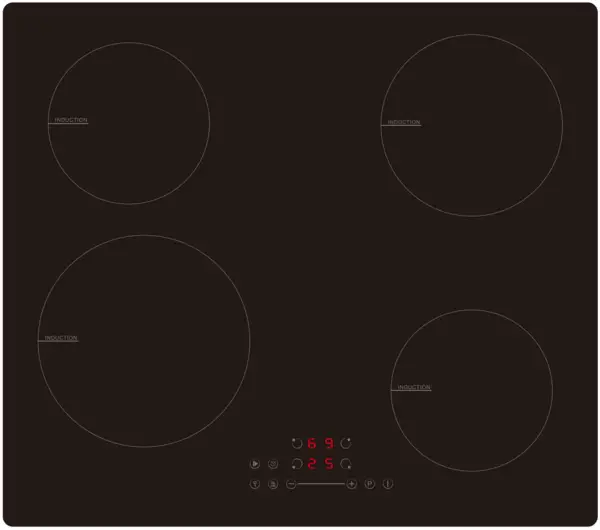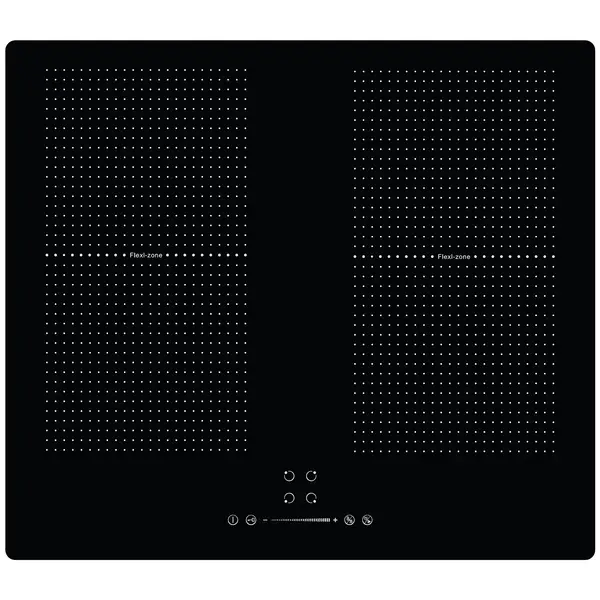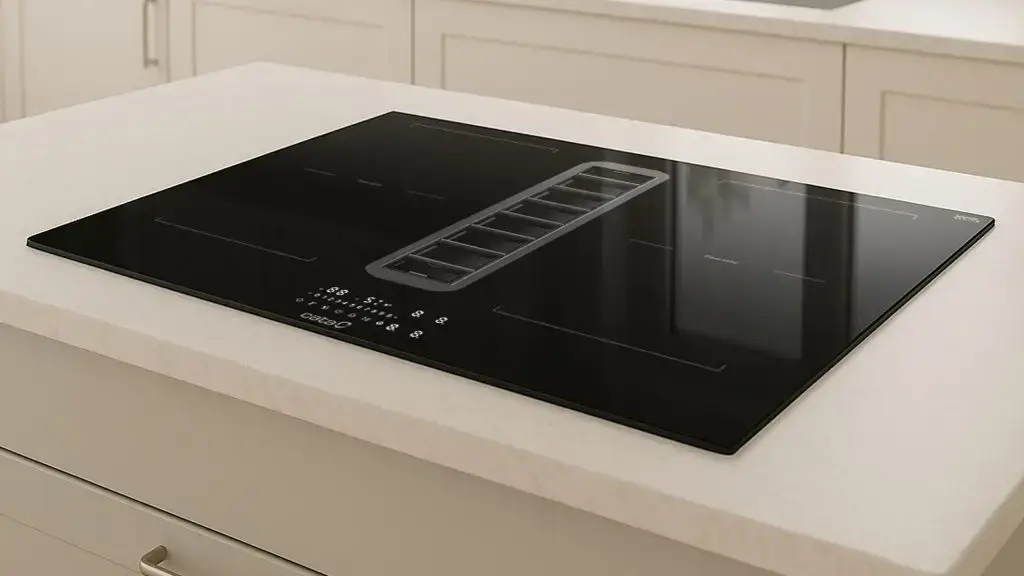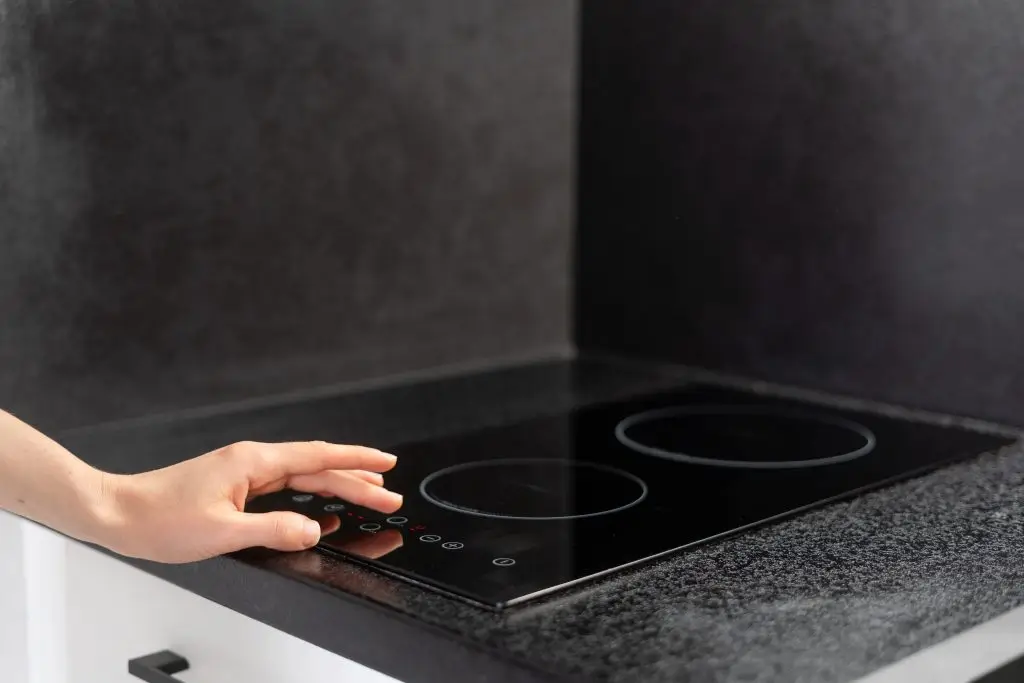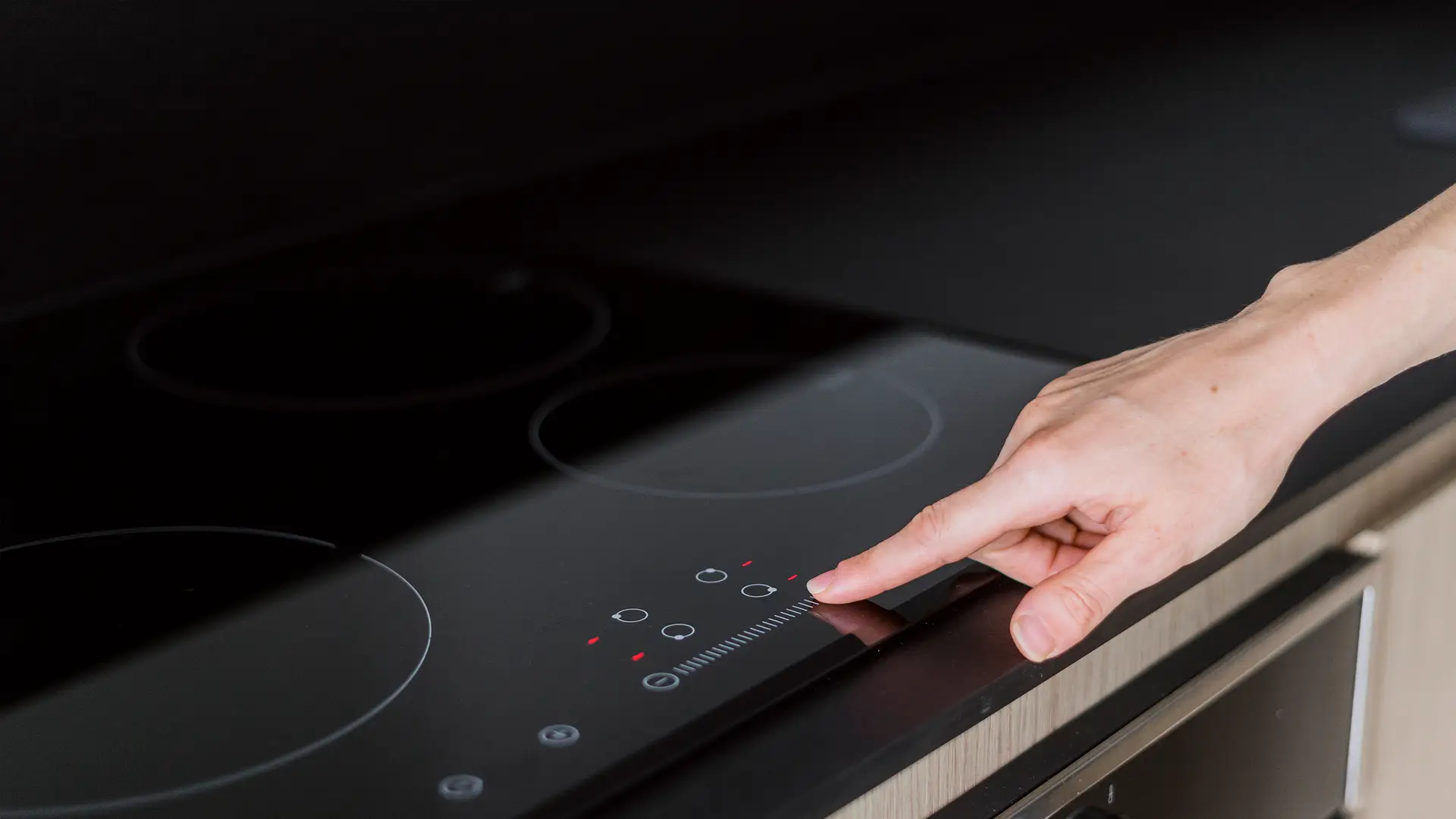
What Are the Different Types of Induction Hobs?
If you’re upgrading your kitchen, an induction hob is one of the most modern and efficient cooking options available. Unlike gas or ceramic models, induction uses electromagnetic fields to heat the pan directly rather than the glass surface. This delivers rapid heat-up times, excellent energy efficiency, precise temperature control and enhanced safety, as the hob stays cooler and only warms beneath the cookware.
However, not all induction hobs are the same. The market ranges from compact portable induction hobs (13A plug-in) to sleek downdraft induction hobs with built-in extraction. You’ll also find standard 4-zone induction hobs for everyday cooking, flexible flexi-zone induction hobs that merge zones for larger pans, modular domino induction hobs for custom layouts and extra-wide induction hobs ideal for larger households. This guide walks you through the different types of induction hobs, their features and the main pros and cons, helping you choose the perfect model for your kitchen.
Standard 4-Zone Induction Hobs
The most common type of induction hob is the standard 4-zone model. Usually around 60cm wide, it’s designed to fit seamlessly into most UK kitchens and offers a practical balance of performance and simplicity.
With four individual cooking zones, you can prepare multiple dishes at once. Many models also include convenient features such as touch controls, pan detection and automatic safety cut-offs, making them ideal for everyday family cooking.
Pros
-
Fits standard 60cm cut-outs:
Simple to install and compatible with most kitchen layouts. -
Four versatile cooking zones:
Well suited for everyday meals and multi-pan cooking. -
Affordable option:
Typically the most budget-friendly induction hob type. -
Built-in safety features:
Includes essentials like auto shut-off and overheat protection.
Cons
-
Fixed zone sizes:
May struggle with very large or irregularly shaped pans. -
Fewer advanced features:
Lacks the flexibility of bridge zones or the tech found in vented and downdraft models.
Flexi-Zone Induction Hobs
Flexi-zone induction hobs offer much greater versatility by allowing two adjacent zones to merge into one larger heating area. This makes them perfect for oversized pots, roasting trays or griddle pans that wouldn’t fit comfortably on fixed-size zones.
Pros
-
Flexible cooking space:
Ideal for large, long or unusually shaped pans. -
Premium features:
Often includes advanced functions found on higher-end models. -
Great for varied cookware:
Perfect if you regularly switch between different pan types and sizes.
Cons
-
Higher price point:
Typically more expensive than standard 4-zone hobs. -
Limited to mid and high-end ranges:
Not as commonly available on entry-level models.
Portable / Plug-In Induction Hobs (13 Amp)
Portable induction hobs are small, self-contained units that plug into a standard 13A socket. Available as single or double models, they’re ideal for compact kitchens, student accommodation, rentals or caravans, and they make a great temporary or backup cooking solution.
Pros
-
Plug-in convenience:
No hardwiring needed — simply plug in and start cooking. -
Compact and lightweight:
Easy to move, store or use as an extra hob when the kitchen gets busy. -
Great for small spaces:
Ideal for studio flats, caravans or temporary setups.
Cons
-
Lower power output:
Less powerful than built-in induction hobs, especially when using multiple zones. -
Smaller cooking area:
Not always suitable for larger households or oversized pans.
Are you considering a 13 amp induction hob? Take a look at our full guide for more details.
Downdraft Induction Hobs
A downdraft induction hob combines powerful induction cooking with a built-in extractor system. Instead of rising into the room, steam and odours are pulled directly down into the hob surface, removing the need for a separate cooker hood and creating a minimalist, open-plan look.
Pros
-
Sleek, modern design:
Ideal for open-plan kitchens that benefit from unobstructed sightlines. -
Saves valuable space:
Removes the need for an overhead extractor or wall-mounted hood. -
Efficient source-level extraction:
Captures steam and odours immediately, improving air quality.
Cons
-
Higher upfront cost:
One of the most expensive induction hob types on the market. -
More complex installation:
Requires ducting or a recirculation kit, increasing installation time and cost.
Domino Induction Hobs
Domino hobs are modular cooking units, usually featuring one or two zones. They’re designed to be mixed and matched with other hob types — such as gas, ceramic or specialist modules like a teppanyaki grill — allowing you to build a completely customised cooking setup.
Pros
-
Highly customisable:
Perfect for creating a tailored cooking layout that suits your needs. -
Ideal for small spaces:
Works well in compact kitchens or as an add-on beside a main hob. -
Premium aesthetic:
Sleek design with excellent flexibility.
Cons
-
Higher cost per zone:
Typically more expensive than standard full-size induction hobs. -
Limited cooking space:
Smaller surface area may not suit larger households or big pans.
Extra-Wide Induction Hobs
Extra-wide induction hobs typically range from 70cm to 90cm in width and often include five or six cooking zones. They’re ideal for larger households or for cooks who like to prepare several dishes at once.
Pros
-
Generous cooking space:
Plenty of room for multiple pans, perfect for batch cooking or bigger meals. -
Advanced features:
Many models include flexi-zone functions for added versatility. -
Premium design:
A stylish choice that complements larger or high-end kitchens.
Cons
-
Requires more worktop space:
Not suitable for compact kitchens or narrow layouts. -
Higher upfront cost:
Generally more expensive than standard 60cm models.
Built-In vs Portable Induction Hobs
| Feature | Built-In Induction Hob | Portable Induction Hob |
|---|---|---|
| Installation | Requires professional fitting and usually hardwiring | Plugs into a standard 13A socket |
| Size | 60–90cm wide, with 4–6 zones | Single or double hob units |
| Power | High output, ideal for family cooking | Lower output, suitable for light cooking |
| Portability | Fixed in place | Lightweight and easy to move |
| Price | Higher upfront cost | More affordable entry-level option |
Conclusion
Induction hobs come in a wide variety of styles, from compact plug-in models to sleek downdraft systems with integrated extraction. Choosing the right one depends on your kitchen size, cooking habits, and budget. For most households, a standard 4-zone hob will provide excellent performance, while larger families may prefer an extra-wide or flexi-zone option. If you’re short on space or want maximum flexibility, a portable or domino hob could be the perfect choice.
Frequently Asked Questions
- All Posts
- Cooker Hood Guides & Advice
- Dishwasher Guides & Advice
- General Appliance Guides & Advice
- Hob Guides & Advice
- Laundry Guides & Advice
- Microwave Guides & Advice
- Oven Guides & Advice
- Wine Cooler Guides & Advice
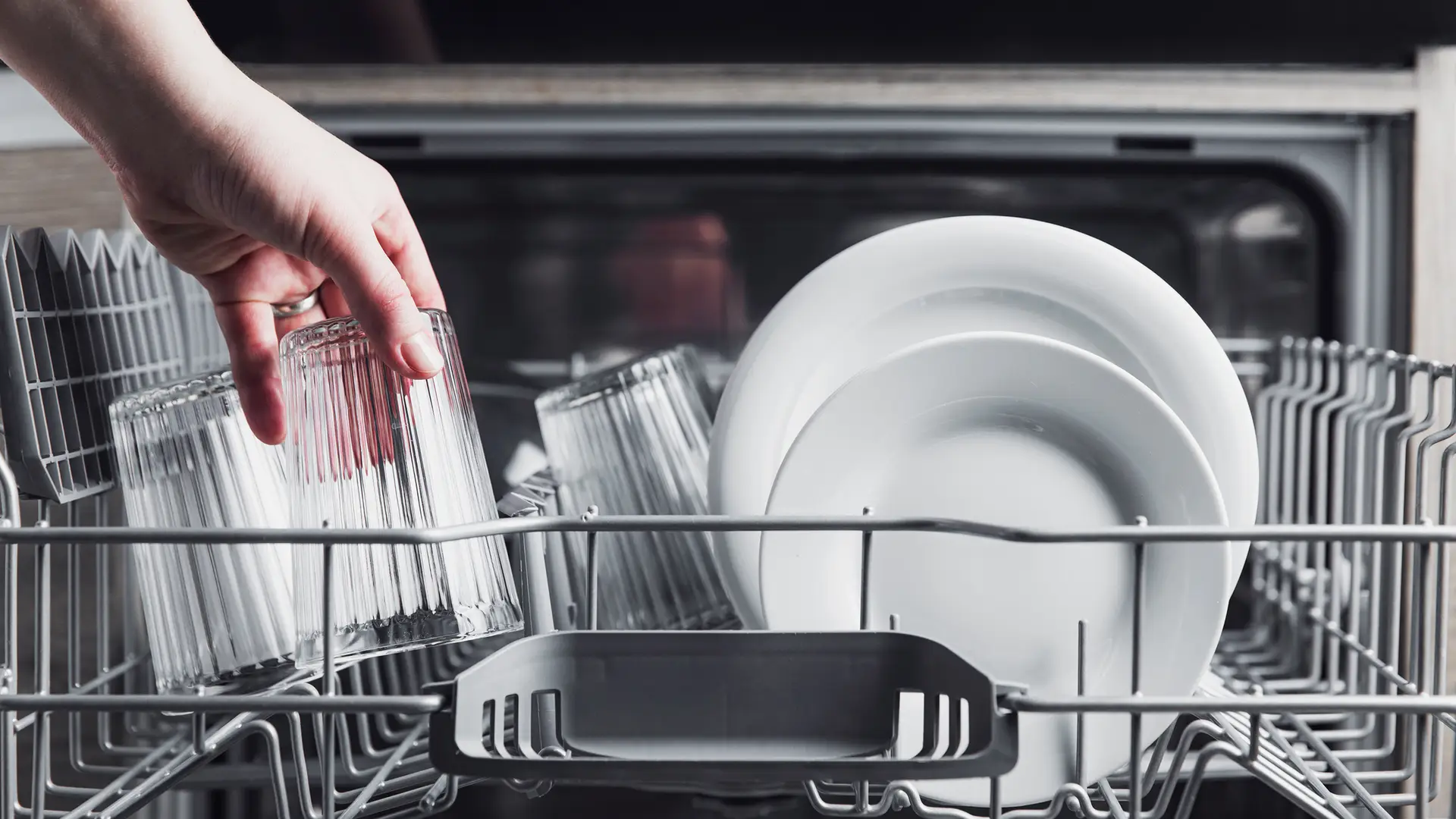
Discover if paying extra for an energy-efficient dishwasher is worth it. Learn how efficient models save money and energy over...
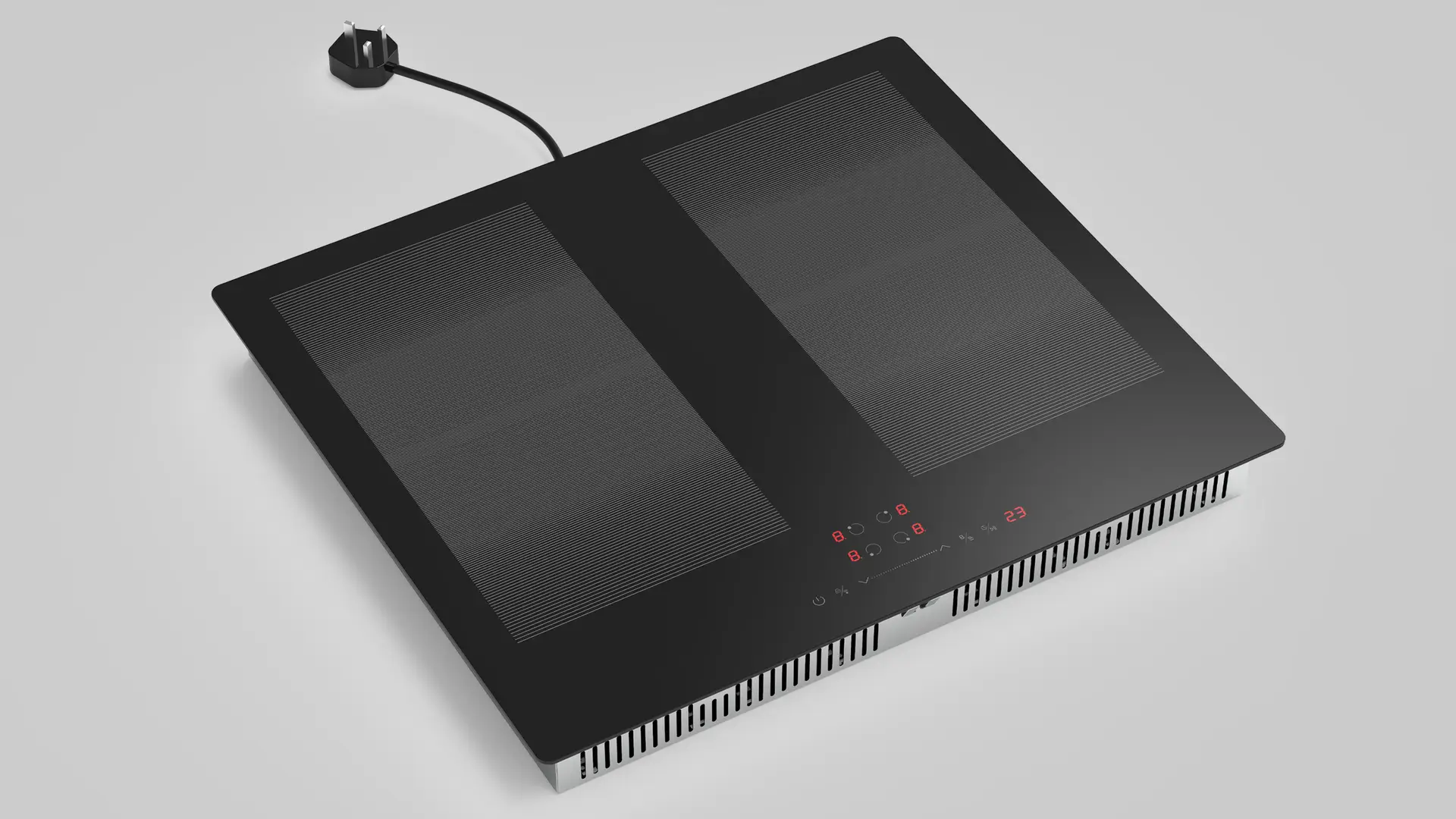
Discover the pros and cons of 13 amp plug-in induction hobs. Learn if they’re right for your kitchen, budget, and...

Yes, vinegar and baking soda safely clean your dishwasher and remove odours. Learn the best method and how often to...

Wondering if kitchen foil can go in the oven? Discover safety tips, best practices, and common mistakes. Read now to...

Find out why your dishwasher isn’t drying properly. Learn common causes, easy fixes, and maintenance tips to restore perfect drying...
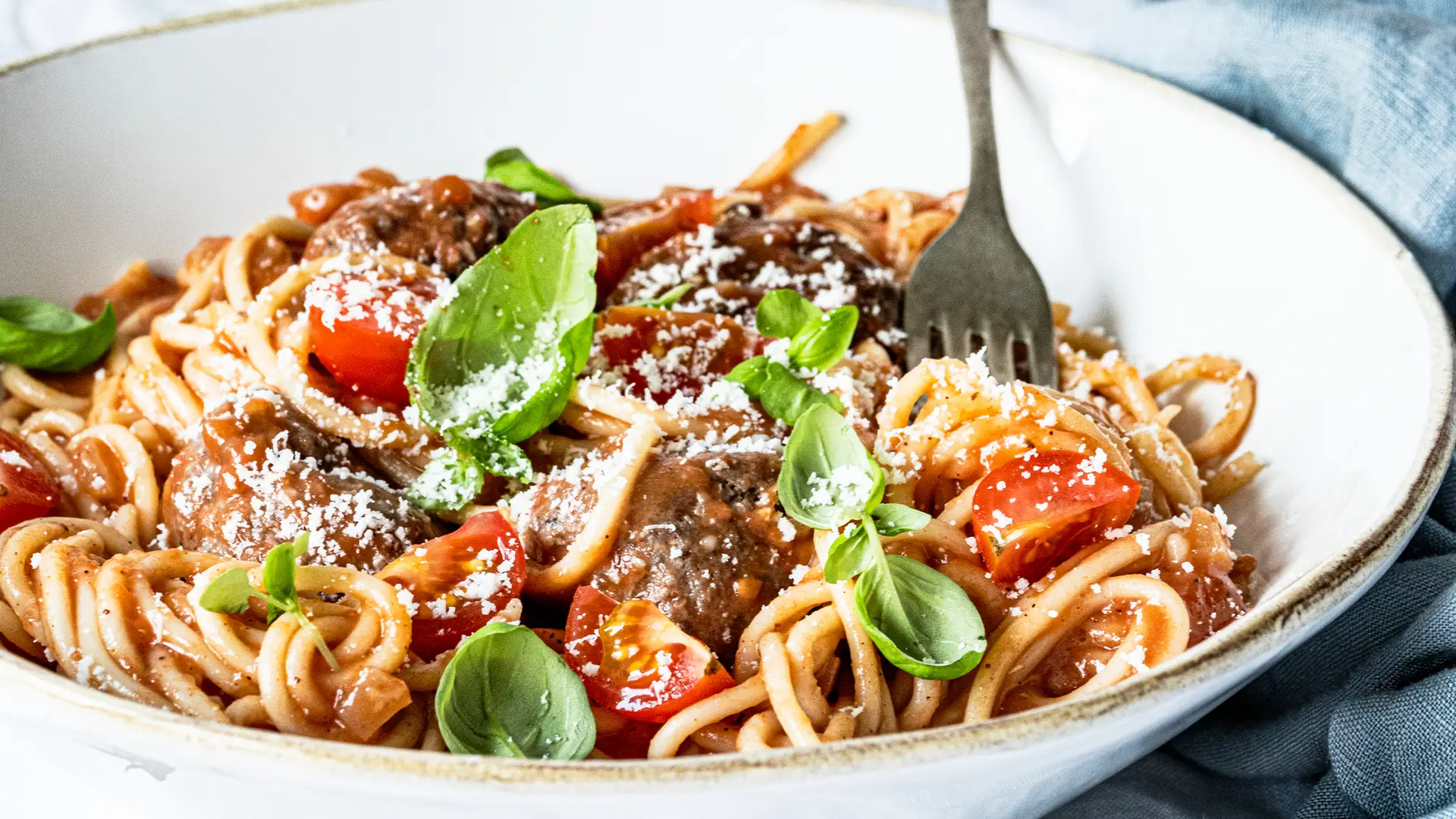
Master pasta cooking on your induction hob with our simple step-by-step guide. Learn timings, tips, and tricks for perfect results...
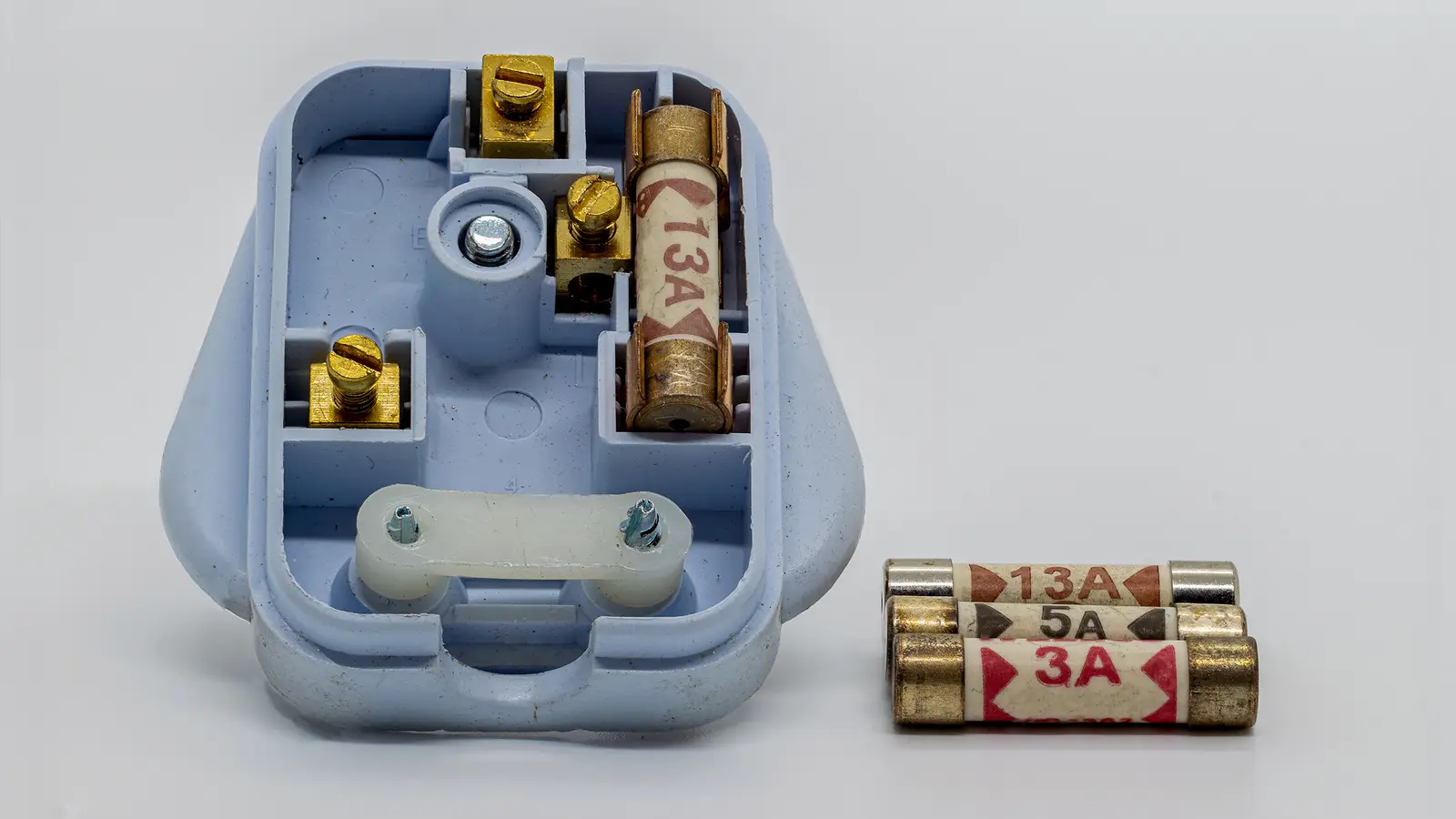
Can you plug a cooker hood into a normal socket? Learn what UK rules allow, safe installation tips, and when...
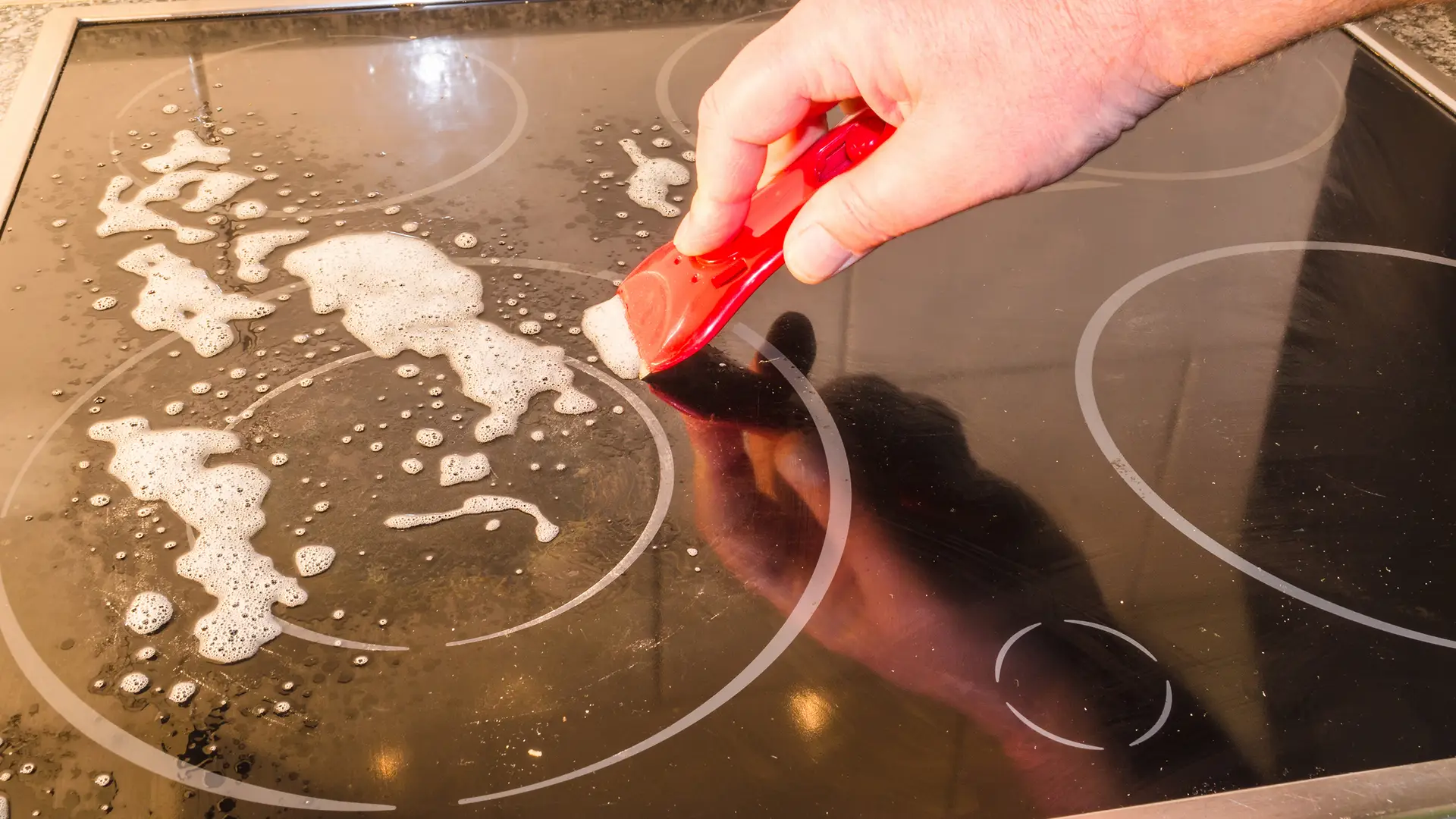
Learn whether induction hobs scratch easily and how to prevent damage. Discover simple cleaning and care tips to keep your...
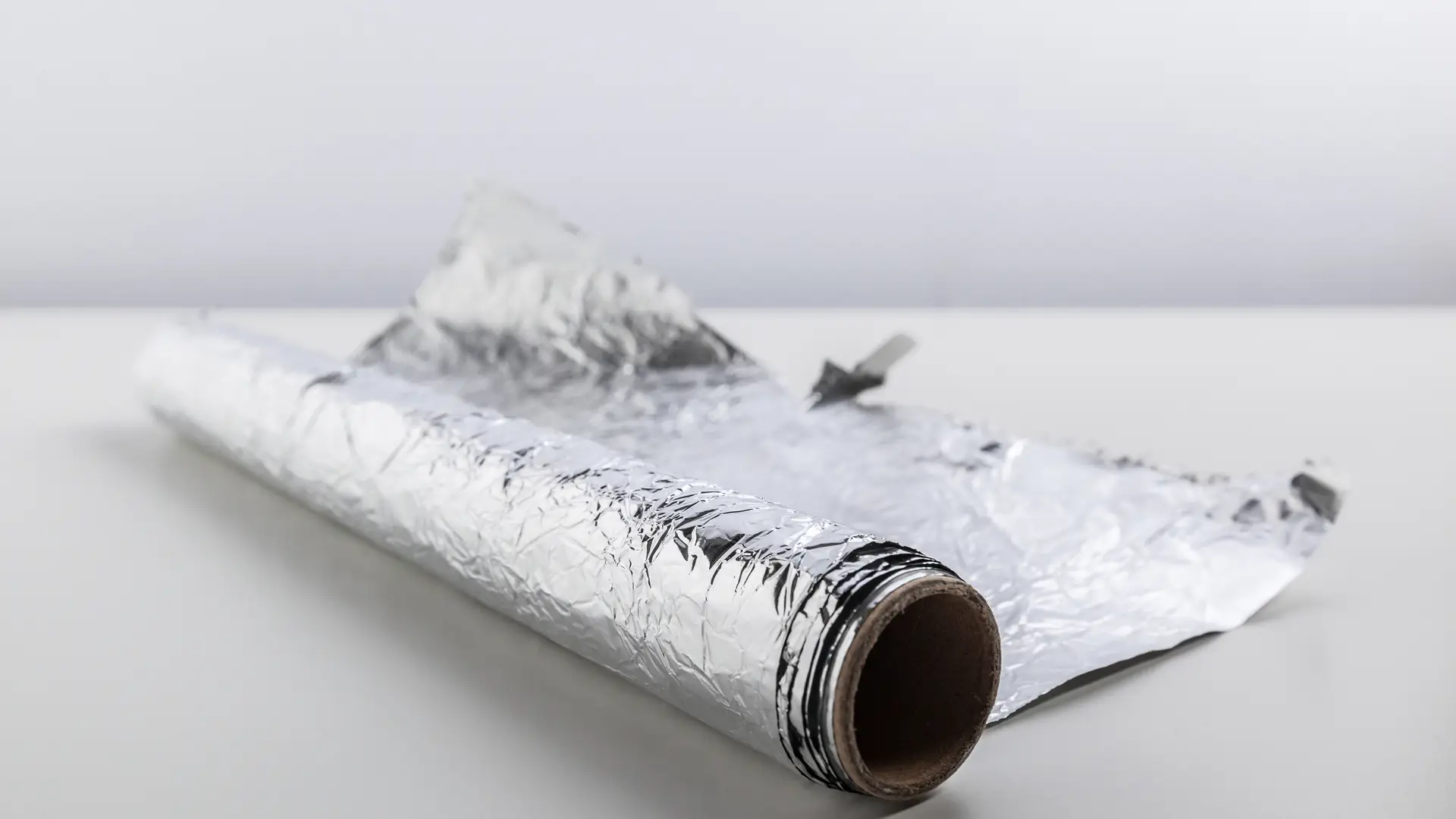
Think it’s safe to use foil in the microwave? Learn why aluminium foil can cause sparks or fire and discover...
